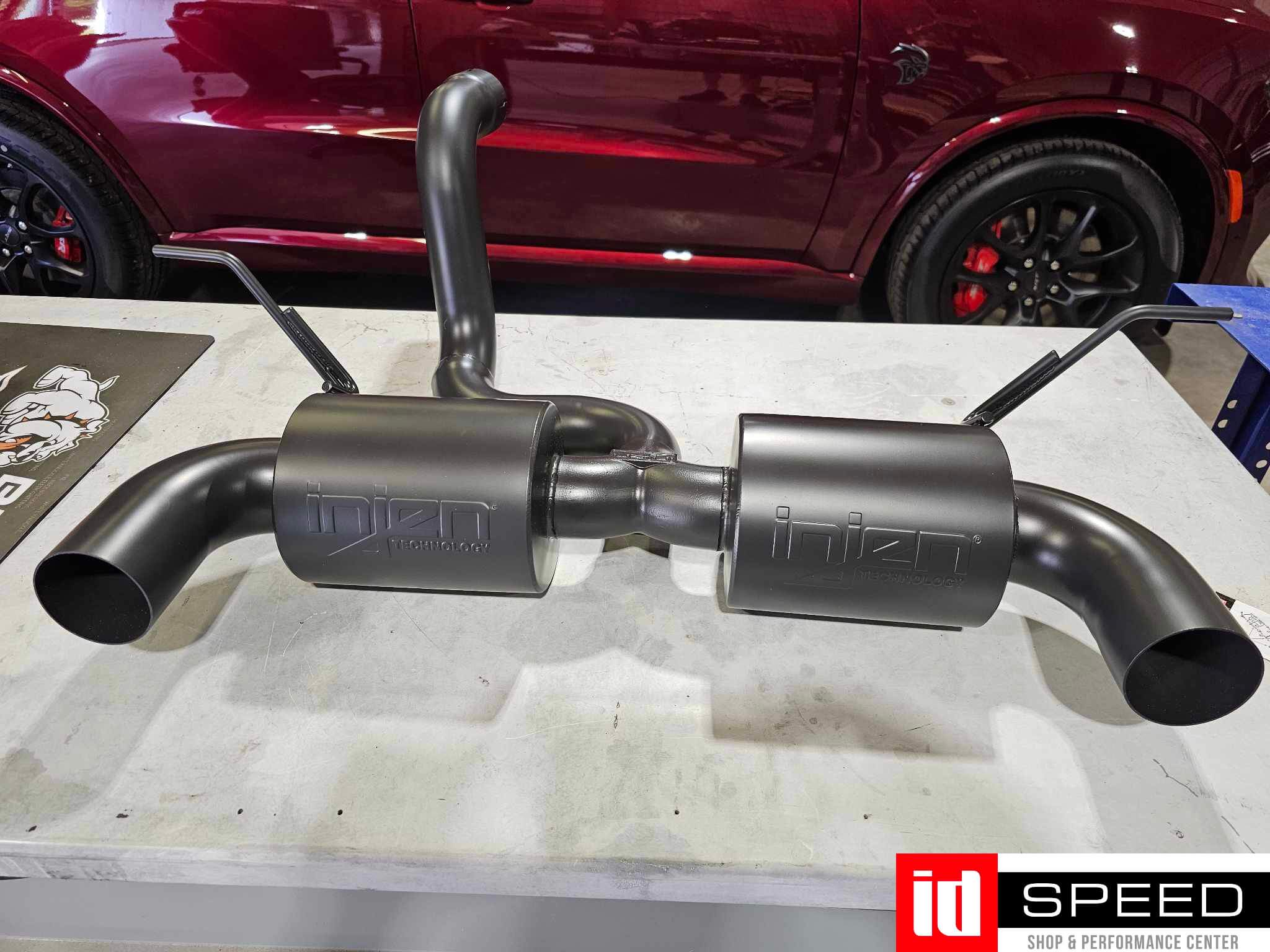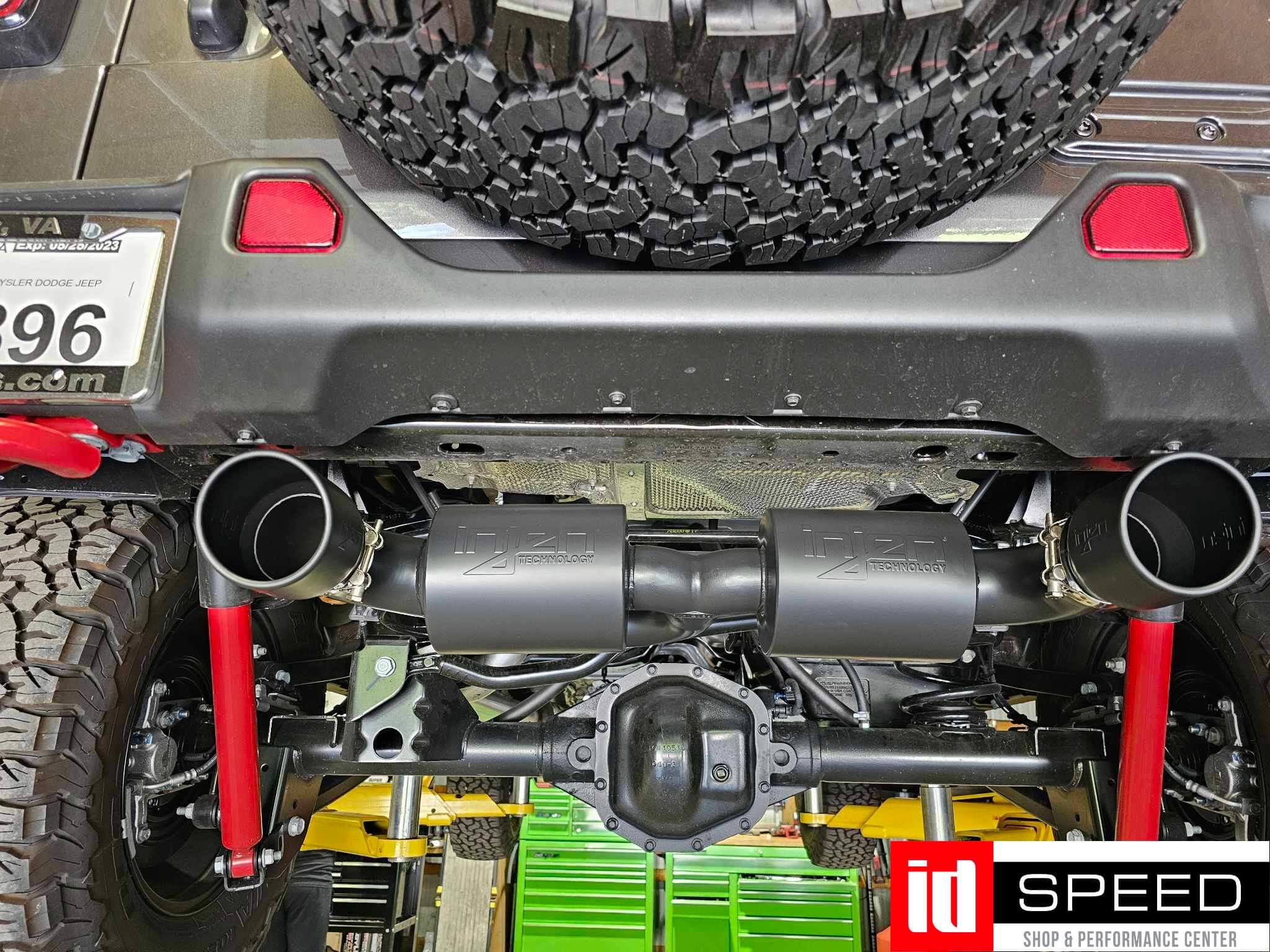When searching for an exhaust for our customers new Jeep Wrangler, he had a few requirements. The first being, a nice lower bass rumble, rather than a higher pitch rasp. He wanted good ground clearance, just in case he's ever on the trail. Lastly, black...the exhaust had to be black to match the accents on the Jeep. We did some searching, within the customers price ranger and also in stock. It needed was happening now, along with some other cool modifications. We'll post more on those later.
Installing a cat-back exhaust system on a Jeep Wrangler 2.0 involves a few
steps.
Here's a general guide to help you with the installation process:
Gather the necessary tools and equipment:
Cat-back exhaust system
Jack and jack stands
Socket set
Lubricating spray (e.g., WD-40)
Safety glasses and glove

Prepare the vehicle:
Park your Jeep Wrangler on a level surface and engage the parking
brake.
Raise the rear of the vehicle using a jack and secure it with jack stand
for safety.
Remove the stock exhaust:
Locate the stock exhaust system underneath the vehicle.
Spray lubricating spray (such as WD-40) on the exhaust hangers and
bolts to make removal easier.
Loosen and remove the bolts and clamps connecting the exhaust system
components. Typically, there will be connections at the catalytic
converter, muffler, and tailpipe.
Carefully detach the stock exhaust system from the hangers and remove
it from the vehicle. You may need to use some force or a rubber mallet to
loosen any stuck components.
Prepare the new cat-back exhaust system:
Unpack the new cat-back exhaust system and ensure all the
components are included.
Follow the manufacturer's instructions to identify and organize the
various components of the new system.
Check the fitment of the new components and make any necessary
adjustments.

Install the new cat-back exhaust system:

Test the installation:
Lower the vehicle from the jack stands and remove the jack.
Start the engine and let it idle for a few minutes to check for any exhaust
leaks or unusual sounds.
Carefully inspect all connection points, hangers, and the overall installation
for any signs of problems.

You can find the Injen Exhaust System we used by clicking here.


